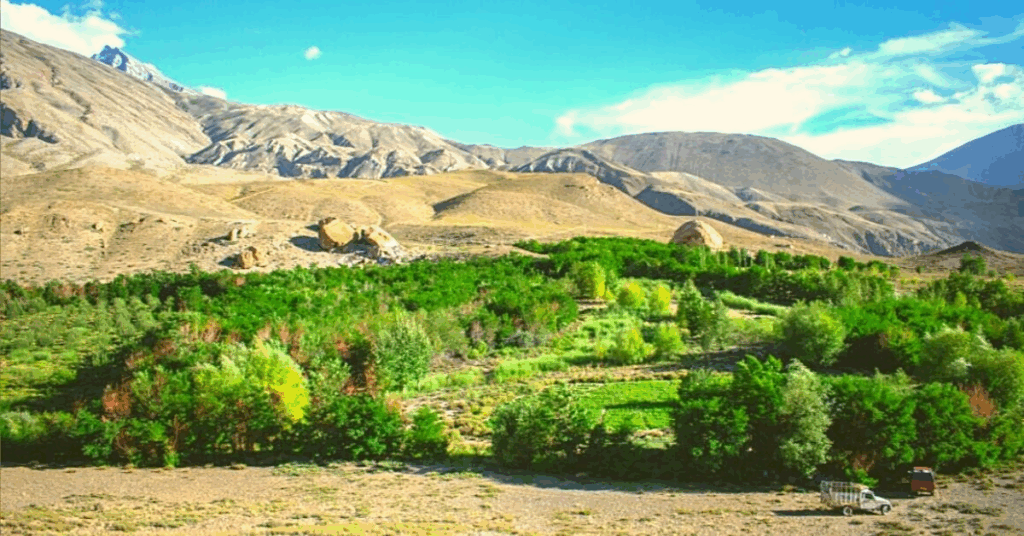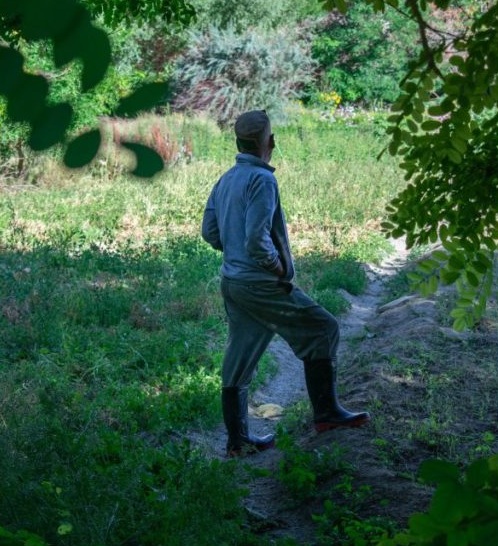In Himachal Pradesh’s Kinnaur district, a once-barren 65-hectare cold desert in Thang Karma village now thrives as a lush forest, thanks to Anand Dhwaj Negi, a former government clerical worker turned environmental pioneer.
Over 22 years, this Sunam villager single-handedly planted 30,000 trees, battling extreme weather and bureaucratic indifference until his death in 2021.
His journey from a humble farmer’s son to a celebrated ecological warrior has left a legacy now recognised as a climate resilience model by Himachal’s Horticulture Department, with local communities preserving his vision through workshops and conservation drives.

From Pen to Saplings: The Unlikely Environmentalist
Anand Dhwaj Negi’s transformation from a government office clerk to a master afforestor reads like a Himalayan fable. After retiring from his clerical position in the late 1990s, the 50-something bureaucrat traded inkpots for saplings, driven by childhood memories of vanishing oak forests.
“He’d recall how his father struggled to grow barley in the 1960s as topsoil eroded,” shares his younger brother, Surinder Negi. Armed with traditional knowledge from his farming ancestry and self-taught silviculture techniques, Negi began his solo mission in 1998, selecting Thang Karma’s skeletal slopes as his canvas.
Today, the forest stands as a living archive of his ingenuity – from crescent-shaped trenches that trap glacial meltwater to stone bunds that mimic natural terraces.
Roots of Resilience: The Making of a Green Champion
Born in 1948 to a family of marginal farmers in Sunam village, Negi’s early life was shaped by Kinnaur’s harsh rhythms.
Though he attended the local government school, his true education came from observing his father’s battles with crop failures. “Appa (father) would say our land was becoming a ghost – the streams he drank from as a boy had vanished by the 1980s,” reveals daughter-in-law Sunita Negi.
His 25-year bureaucratic career, far from dulling his environmental instincts, gave him administrative insights he later used to navigate land-use regulations. The turning point came in 1997, when unprecedented landslides claimed 14 lives in neighbouring Batseri – a tragedy Negi attributed to deforestation, cementing his resolve.

Seeds of Change: Community Transformation
What began as one man’s crusade became a movement by the mid-2000s, as Negi’s early plantations began altering microclimates. “The first decade was brutal – hailstorms destroyed 70% of saplings in 2003 alone,” recounts fellow villager Prakash Chandra.
But Negi adapted, developing a unique ‘Kinnauri permaculture’ model: planting nitrogen-fixing seabuckthorn as natural fertilisers, using sheep wool mulch for insulation, and creating ‘nursery pits’ where seedlings matured before transplantation.
By 2015, the forest’s canopy had lowered local temperatures by 3°C, reviving dormant springs. “His work proved that cold deserts aren’t death zones but dormant gardens,” asserts Dr. R.S. Rana, former head of Solan’s Forestry Research Institute.

The Logical Indian’s Perspective
Anand Dhwaj Negi’s life embodies the quiet revolution India needs – where environmental stewardship emerges from cultural memory rather than corporate CSR modules. His story disrupts the false dichotomy between development and ecology, showing how traditional knowledge can pioneer climate solutions.
As megacities invest in smart forests, Negi’s legacy reminds us that true sustainability grows from the ground up, one sapling at a time. Can we envision a national movement where every retired citizen adopts a patch of degraded land? Share how you’d reimagine retirement as a phase of ecological service.










